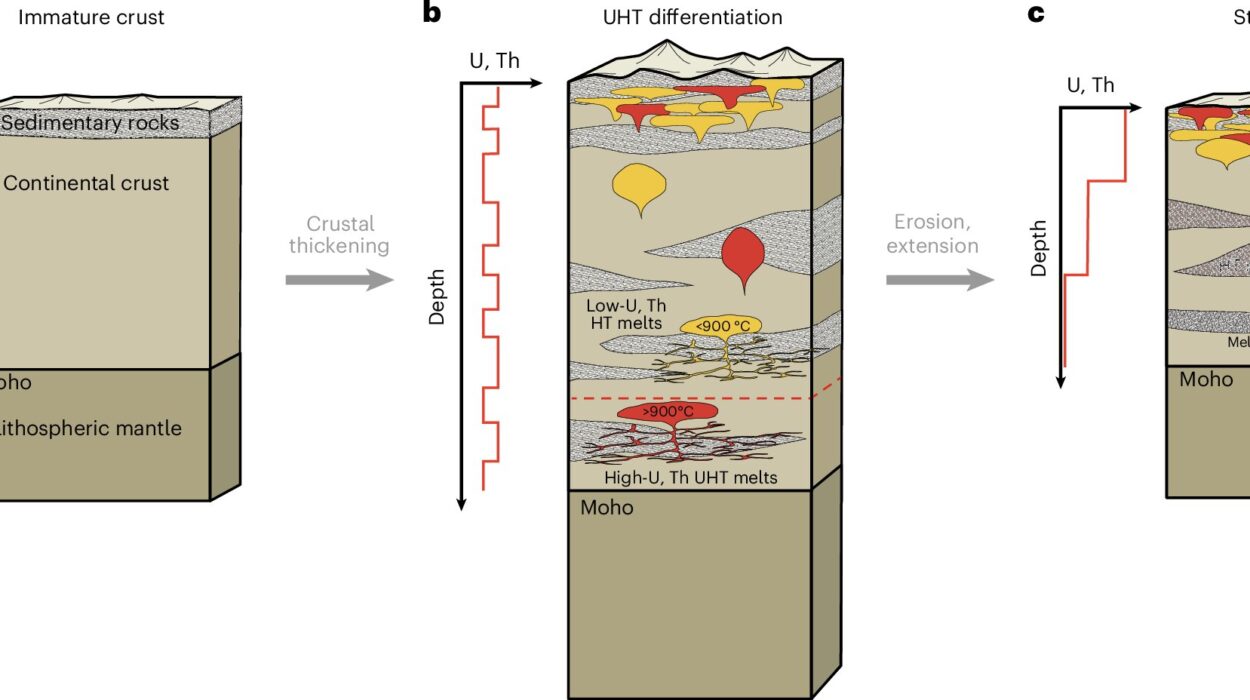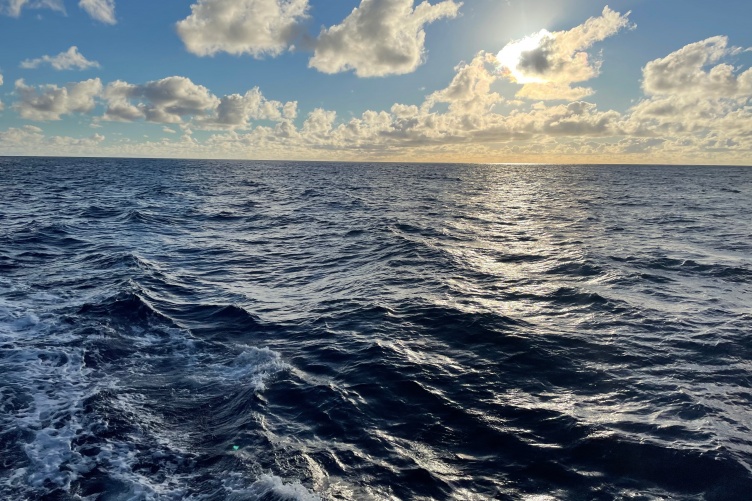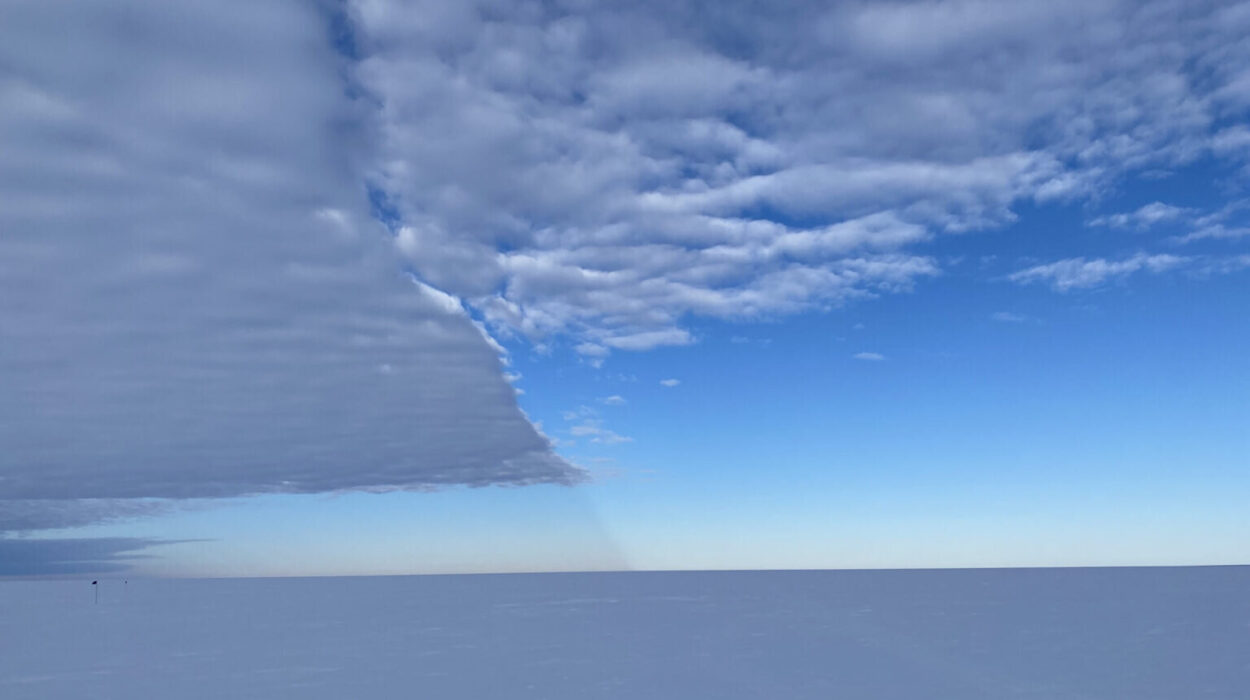In a desolate corner of East Antarctica, where the wind howls over barren white ridges and the sun lingers low on the horizon, scientists have uncovered something extraordinary—a frozen time capsule holding the breath of ancient Earth. In the Allan Hills, a team of U.S. researchers has discovered the oldest directly dated ice and air on the planet, dating back an astonishing six million years.
The find, led by Sarah Shackleton of the Woods Hole Oceanographic Institution and John Higgins of Princeton University, represents a profound leap in our ability to look deep into Earth’s climatic past. Trapped within this ancient ice are tiny bubbles of air—microscopic relics that contain samples of Earth’s atmosphere as it was when early ancestors of modern humans were only beginning to emerge in Africa, and when the world was far warmer and wetter than today.
The research, published in the Proceedings of the National Academy of Sciences, marks a new milestone for the Center for Oldest Ice Exploration (COLDEX), a collaboration of 15 U.S. research institutions led by Oregon State University. What the team found in Antarctica is not simply old ice—it is a frozen narrative of a planet in transition, a record that could reshape our understanding of how Earth’s climate has evolved through deep time.
Time Machines of Ice
“Ice cores are like time machines,” said Shackleton, reflecting on her years spent drilling through Antarctic ice. “They let us take a look at what our planet was like in the past.”
This is no poetic exaggeration. Ice cores—cylindrical samples extracted from glaciers and ice sheets—preserve a layer-by-layer archive of snowfall, dust, volcanic ash, and most importantly, air bubbles. These bubbles are sealed fragments of ancient atmospheres, each one holding precise information about greenhouse gases such as carbon dioxide and methane.
For decades, ice cores have been the gold standard of paleoclimatology, providing detailed records of Earth’s temperature, atmospheric composition, and volcanic activity going back 800,000 years. But the ice from Allan Hills extends that record more than sixfold, into a time when global conditions were radically different.
The period six million years ago belongs to the late Miocene epoch, when Earth’s climate was warmer, sea levels were higher, and the Antarctic ice sheet was smaller than it is today. By studying this ancient ice, scientists can directly observe how atmospheric carbon dioxide and temperature interacted in a naturally warmer world—offering a vital point of comparison for our rapidly warming present.
A Window to a Warmer Earth
When the research team analyzed the oxygen isotopes preserved in the Allan Hills ice, they found clear evidence of a long-term cooling trend of about 12 degrees Celsius over the past six million years. This gradual cooling marked the transition from a greenhouse Earth to the ice-dominated planet we now inhabit.
The discovery allows scientists to quantify, for the first time, how dramatically Antarctica cooled as the continent became fully glaciated. During the Miocene, vast forests and tundra likely stretched across regions that are now buried beneath kilometers of ice. By understanding how the Antarctic ice sheet grew and stabilized, researchers hope to uncover clues about how it might behave under modern warming conditions.
The ice also preserves something even more elusive—ancient air. Using sophisticated techniques involving isotopes of noble gases such as argon, the team was able to directly date the ice, measuring its age through the properties of the air trapped within it. Unlike indirect methods that infer age based on surrounding sediments or flow models, direct dating provides an unambiguous snapshot of Earth’s atmosphere from a specific time.
These “climate snapshots,” as co-leader John Higgins calls them, offer an unparalleled glimpse into how greenhouse gases and global temperatures evolved together across millions of years.
The Hunt for the World’s Oldest Ice
The Allan Hills, located on the fringe of East Antarctica’s massive ice sheet, have long intrigued scientists. Unlike the smooth, central ice dome that blankets much of the continent, the Allan Hills region is sculpted by rugged mountains and fierce winds. These extreme conditions combine to preserve pockets of exceptionally old ice near the surface—ice that, through the slow flow of glaciers and the erosion of younger layers, has been lifted upward from the deep past.
For Shackleton and her team, reaching these ancient layers meant enduring one of the harshest environments on Earth. The Allan Hills are remote even by Antarctic standards, accessible only after weeks of preparation, travel by small aircraft, and the establishment of isolated field camps where researchers live and work for months amid temperatures plunging below minus 40 degrees Celsius.
“The wind blows away fresh snow, and the cold slows the ice to almost a standstill,” Shackleton explained. “That combination makes Allan Hills one of the best places in the world to find shallow old ice—and one of the toughest places to spend a field season.”
Using custom drilling equipment, the team extracted ice cores between one and two hundred meters deep—a relatively shallow depth compared to the multi-kilometer cores drilled in central Antarctica. These samples, however, contained ice far older than any previously retrieved by such shallow methods.
Surpassing Expectations
Before the mission, the researchers hoped to find ice as old as three million years. “We knew the ice was old in this region,” said COLDEX Director Ed Brook, a paleoclimatologist at Oregon State University. “But this discovery has far exceeded our expectations.”
The revelation of six-million-year-old ice stunned the scientific community. Until now, the oldest continuous ice core record—obtained by European teams drilling deep into the interior of East Antarctica—reached only about 1.2 million years. The Allan Hills samples, though not continuous, extend our view of Earth’s atmosphere nearly five million years further back.
In doing so, they provide the missing context for one of the most important transitions in Earth’s climate history: the onset of the Antarctic glaciations. By analyzing gas concentrations and isotopic ratios, scientists can reconstruct how levels of carbon dioxide fluctuated as global temperatures declined and ice expanded.
These data are not mere curiosities; they are essential for testing climate models that predict future changes. The past, locked in these frozen relics, serves as the ultimate laboratory for understanding how Earth responds to rising or falling greenhouse gases.
The Science of Ancient Air
The method that allowed scientists to determine the ice’s age with such confidence relies on the isotopic composition of argon, a noble gas found in minute quantities in the air bubbles trapped within the ice. Over time, radioactive decay alters the proportions of argon isotopes, providing a natural clock.
By measuring these isotopic ratios, researchers can calculate how long the air—and therefore the ice—has been sealed. The technique is painstakingly precise, requiring ultra-clean laboratories and instruments sensitive enough to detect differences in atomic mass down to one part in a billion.
These direct measurements eliminate many uncertainties that plague traditional age models. As a result, the Allan Hills cores offer a robust foundation for reconstructing Earth’s ancient climate, one that complements and extends the continuous records from other Antarctic drilling sites.
Reconstructing Earth’s Lost Climates
The implications of this discovery reach far beyond Antarctica. During the Miocene, when this ice first formed, carbon dioxide levels were higher than today—likely between 400 and 600 parts per million. Sea levels were tens of meters higher, and global temperatures several degrees warmer.
By comparing the gas composition in the ancient air bubbles with modern measurements, scientists can quantify how sensitive Earth’s climate is to changes in greenhouse gases. This, in turn, refines projections of future warming.
Ongoing analyses aim to determine the exact CO₂ concentrations preserved in the Allan Hills cores, as well as other greenhouse gases like methane and nitrous oxide. Such data will help clarify the natural pace of climate change before human activity began altering the atmosphere—a crucial baseline for understanding our present trajectory.
A Global Scientific Race
The discovery also highlights an exciting and collegial race among international research teams to push the boundaries of ice core science. While European projects are drilling deep into East Antarctica’s interior to obtain continuous cores spanning more than a million years, the U.S.-led COLDEX team focuses on identifying discontinuous yet much older ice preserved near the surface.
Each approach offers unique advantages. Deep continuous cores provide detailed year-by-year records, while shallow ancient cores like those from Allan Hills offer glimpses into much earlier epochs that would otherwise remain inaccessible. Together, they form a complementary mosaic of Earth’s climate history, each piece adding to the grand picture of planetary change.
“We are building a library of climate snapshots that extend our knowledge of Earth’s atmosphere six times farther back in time than ever before,” Higgins said. “Every sample adds another chapter to the story of how our planet became what it is today.”
The Human Challenge in the Coldest Place on Earth
Behind every ice core lies a human story—of endurance, collaboration, and curiosity. The scientists of COLDEX spend months isolated in Antarctica, battling relentless katabatic winds and subzero temperatures to extract these ancient samples. Their field camps are small outposts of civilization surrounded by endless ice, where days blur together under the dim polar sun.
Life in these camps demands resilience. Researchers work long hours in biting cold, carefully handling fragile ice cores that must be preserved in pristine condition for analysis. Every drill run is a triumph against the elements—a delicate operation that could be thwarted by a single equipment failure or sudden storm.
And yet, the scientists return year after year. The allure of uncovering the Earth’s oldest climate record outweighs every hardship. Each piece of ice lifted from the depths carries within it a fragment of time that no human has ever witnessed.
A Glimpse into the Future
Understanding how Antarctica’s ice responded to past warmth is vital for predicting its future behavior. If the ice sheet has survived intervals of high greenhouse gases in the past, how stable is it today, as atmospheric CO₂ levels once again approach Miocene-era values?
By tracing the history of ice growth and retreat, scientists can identify thresholds beyond which rapid melting might occur—insights critical for anticipating future sea level rise. The lessons embedded in this ancient ice could determine how coastal civilizations prepare for the centuries ahead.
In many ways, the Allan Hills discovery is not only about the past but also a warning about the future. The ice has endured six million years of planetary change, surviving warm periods, glacial cycles, and continental shifts. Whether it can survive the next century of human-induced warming remains an open question.
Toward the Oldest Ice Yet
Buoyed by their success, the COLDEX team is already planning further expeditions. “Given the spectacularly old ice we’ve discovered, we are launching a longer-term study of this region to extend the record even further in time,” said Brook. The project, scheduled between 2026 and 2031, aims to reach ice that could be even older than six million years—perhaps stretching back to a time before the permanent Antarctic ice sheet even existed.
Such a find would represent the ultimate goal of ice core science: to capture the moment when Antarctica first froze, transforming Earth’s climate and shaping the planet we know today.
More information: S. Shackleton et al, Miocene and Pliocene ice and air from the Allan Hills blue ice area, East Antarctica, Proceedings of the National Academy of Sciences (2025). DOI: 10.1073/pnas.2502681122






